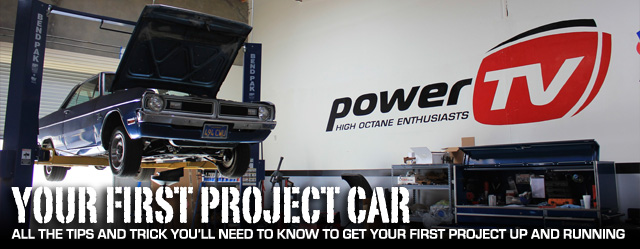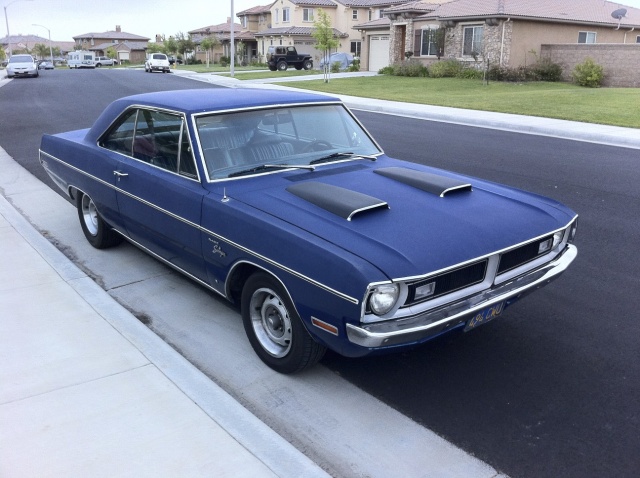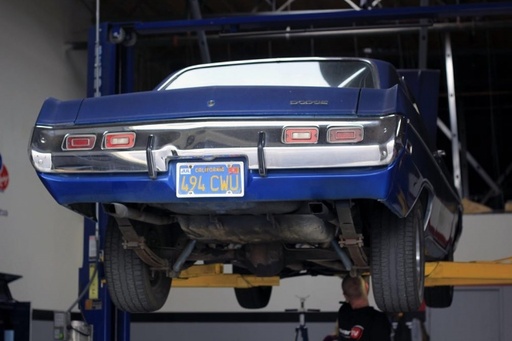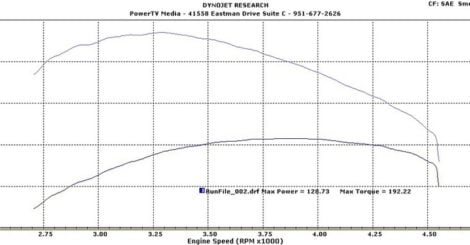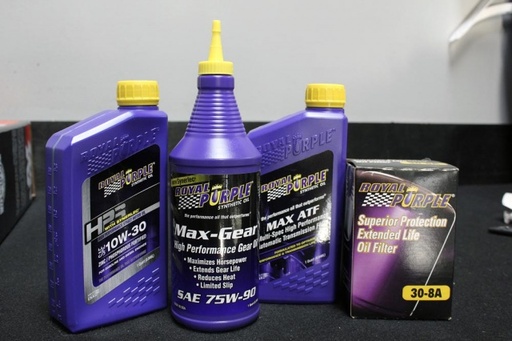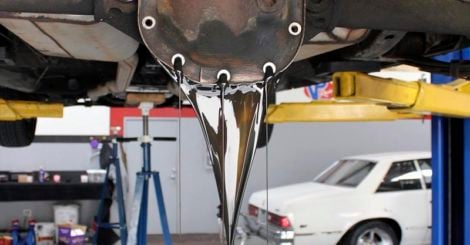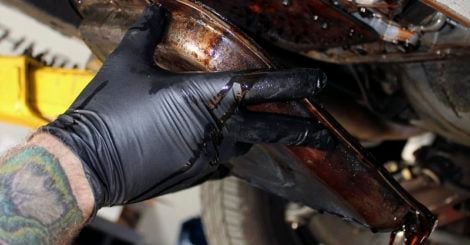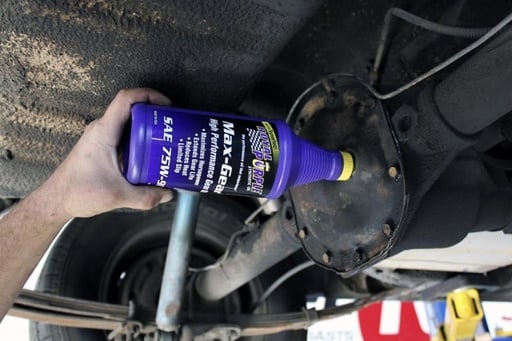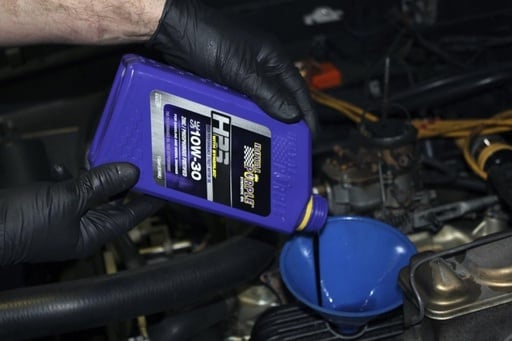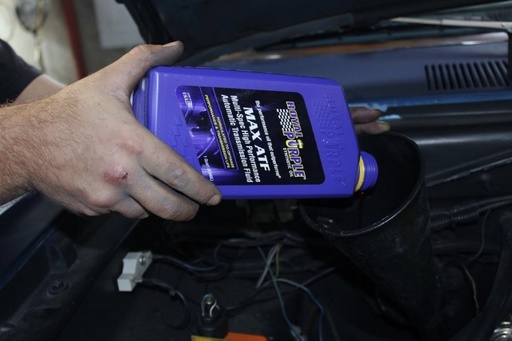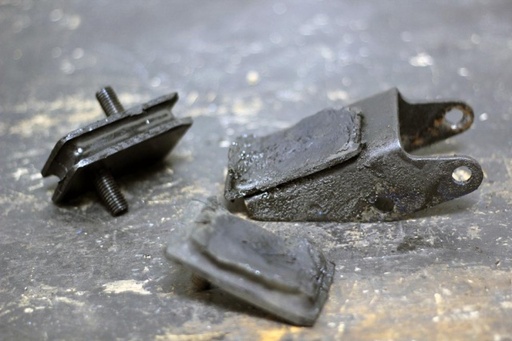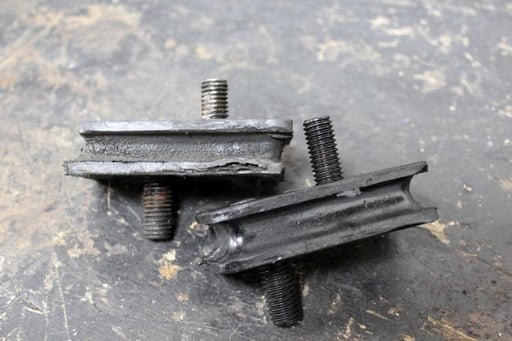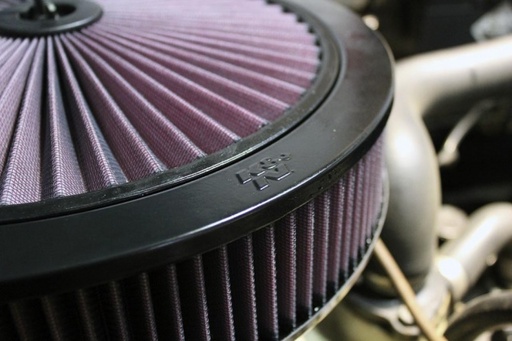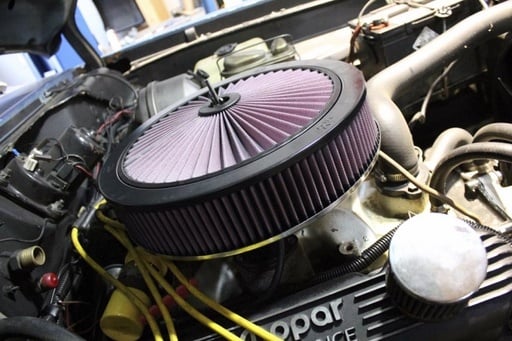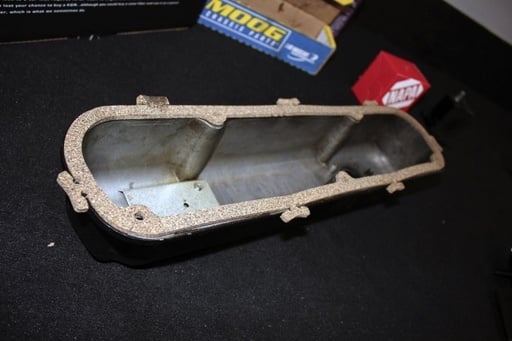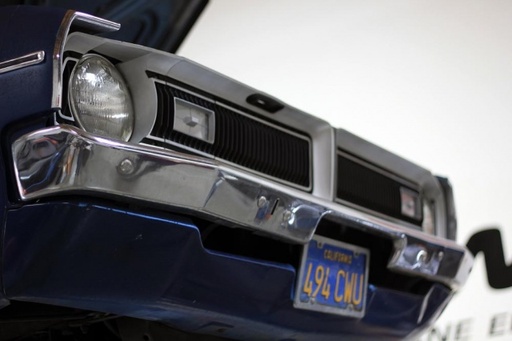The late 60’s and early 70’s ushered in an era that will never be forgotten, especially in the automotive world. It was a time when gas was cheap, steel was plenty, and the era of the V8 was in full force. The “big three” produced a variety of muscle cars all touting big horsepower, burning rubber, and drive-in movies.
Today, we marvel at these creations. We collect, modify, and cherish vehicles that were once bought as day to day creature comforts. It’s an obsession that drives an industry solely dedicated to keeping an era once past, alive and thriving in the 21st century. So, as an enthusiast, it only makes sense to own a piece of this era and give it a rightful place once again on the road, track, or showroom floor.
This article will discuss the experience of owning a 40 year old car; a project that to restore it back to life, in honor of a great era.
Project Poison Dart: ’71 Dodge Dart Swinger
It took nearly four months of searching in Southern California to find a decent Dodge Dart. We had $5,000 total to spend and wanted to find something in good shape, running and drivable. It’s easy to get over your head when choosing a project car, not to mention hard on the wallet. We chose the Dodge Dart for a couple of reasons.
Number one, we’ve developed into a die hard Mopar fan, owning a ’07 Dodge Magnum R/T and a new ’11 Dodge Durango. Number two, it’s a car that has some real potential without the big collector car price. And it fit in our small third car garage very nicely!
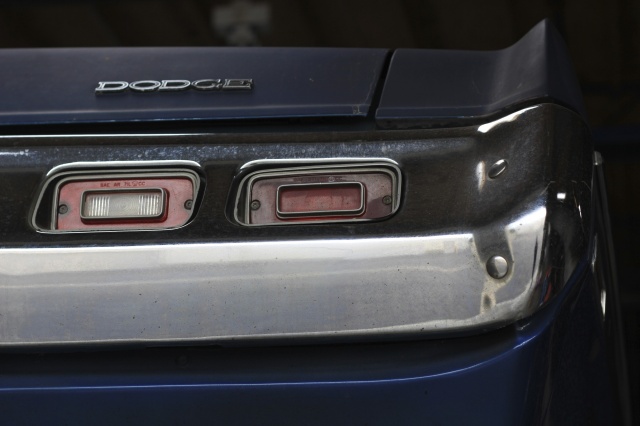 [3]In 1971, the Dodge Dart Swinger 2-door hardtop was released with a 318, 340, and slant six engine and a factory 4-speed automatic transmission. In our case, this particular Swinger had the popular 318 V8.
[3]In 1971, the Dodge Dart Swinger 2-door hardtop was released with a 318, 340, and slant six engine and a factory 4-speed automatic transmission. In our case, this particular Swinger had the popular 318 V8.
The Dodge 318 V8 engine was produced in Flint, Michigan from ’67 to ’02. The 318 was not just limited to Dodges, but also powered Plymouth and Chrysler cars as well. The engine is remarkably efficient, durable, and proved to be Chrysler’s mainstay for many of its vehicles over the decades, including the Dart.
This ’71 Dart Swinger lived out in Pomona, Ca and belonged to a young man who often drove it back and forth to the beach with his surfboard. The overall mechanical condition of the car was questionable and it appeared it was maintained enough just to keep it running. It’s original B3 paint is covered up by a secondary dark blue paint job that looked as if it was done in someones garage. The interior is complete, the floorboards are solid, and the car is running. It’s the ideal car for someone looking for a restoration project without having to start from the ground up.
When Buying Your First Project Car, Make Sure To:
- Determine your budget beforehand: How much money can you afford to spend?
- Decide your build theme. Want a full-time racer or just a street/strip car? A restoration or autocross car? It’s up to you.
- Write a list of cars that interest you. Don’t buy just anything. Do you like Mustangs? Pontiacs? Mopars?
- Open your mouth. Talk to those who have cars that you like. Chances are, they’ll know where other cars are for sale.
- Don’t fall in love with paint. Paint can cover a lot of ugliness.
- The more stock, the better. Look for the factory radio, gauges, etc. If the owner has tampered with the wiring, chances are they’ve messed with a lot more.
- Running or near-to-running condition is preferred but not mandatory. If it doesn’t run doesn’t mean it can’t ever. Don’t be discouraged.
- Make sure you have the space to store and work on your car. Wrenching in your apartment parking lot is no fun.
- Tools. You can never have enough of them and they never depreciate in usefulness.
- Don’t be afraid to get your hands dirty. You’ll be happier that you did it yourself.
Mandatory Maintenance
With 2012 marking the Dart’s 41st birthday, there are some elements of the vehicle that could use some careful inspection and possible replacement. With the objective in mind, we chose a select amount of maintenance and repair goals to kick off the project.
All of the work we performed on the ’71 Dart Swinger can be done within a day and is fairly simple. It requires a basic set of wrenches, a lift or jack stands, a used oil container, and a good set of gloves.
While it may be maintenance, we still get to play with some pretty fun parts that mingle the old with the new. Synthetic lubricants were not readily available back in the day and neither were the advancements in air filter technology that we have today, so it’s going to be some what of a performance upgrade as well.
Since we’re obviously making this the first of many stops to the shop for this project car, we also made sure to get a baseline on the dyno. With a 128 horsepower and 192 ft. lbs of torque, we were pleasantly surprised that the car, over 40 years, only lost about 15 horsepower. Not bad!
The '71 Dart on the dyno at the powerTV garage spat out a decent 128hp and 192 ft. lbs. of torque.
Replace The Lubricants
This was a no brainer. It’s commonly a best practice to replace the fluids in any vehicle you purchase, especially a older one simply because you can never count on the previous owner to adhere to regular scheduled maintenance. We opted for Royal Purple [7] for the Dart’s engine, transmission, and gear lubricants.
Check out the nasty gear and transmission oil from a 40 year old car!
Replacing the lubricants in a '71 Dodge Dart Swinger with Royal Purple lubricants.
For the engine oil, Royal Purple [7] recommended their Royal Purple HPS Series Synthetic Motor Oil [12]. Royal Purple HPS Series motor oil is specifically formulated to maximize performance and meet the demands of high performance and modified engines. It’s fortified with a high level of zinc/phosphorus anti-wear additive and Royal Purple’s proprietary Synerlec additive technology. We used a 10W-30 viscosity oil.
We got a hold of Royal Purple’s Max Gear synthetic gear oil [14] (75W-90 weight). Max Gear is an ultra-tough automotive gear oil. It’s designed to maximize power and provide unsurpassed protection to heavily loaded gears.
It makes gears run smoother, quieter, cooler and longer without overhauls. We’ll get to the details and steps we took for replacing the gear oil later in the story.
The last lubricant is set aside for the Dart’s 904 Automatic transmission, Royal Purple’s Max ATF Transmission Oil [15]. Max ATF is a synthetic, high-performance, automatic transmission fluid. It’s low co-efficient of friction and high film strength help to dramatically reduce heat and wear.
Additionally, Royal Purple claims that their Max ATF is more oxidation stable than other transmission fluids for longer fluid life. Automatic transmissions generate a great deal of heat. It’s a must to replace the transmission oil on the Dart to ensure an extended life for the 904. More than 90 percent of all automatic transmission failures are caused by overheating; a 20°F reduction in fluid temperature can double the life of the transmission.
Engine And Transmission Mounts
The ’71 Dart has nothing out of the ordinary when it comes to the mounts for the engine and transmission crossmember. However, after 40 years, the mounts on this Dart are shot. The passenger side engine mount is completely torn apart and the driver side is not in much better shape. The transmission mount is cracked and crumbling away. Definitely a good move to replace these.
The engine and transmission mounts are readily available at most auto-parts stores. Since the Dart uses fairly generic style mounts, it was easy to find and they were even in stock at NAPA for under $8 a piece. Not only are these very easy parts to hunt down, but replace. Using simple hand tools and a floor jack, you can swap out your engine mounts and cross-member mount within a couple of hours.
Replacing the engine and transmission mounts is a must for a 40 year old car. The easiest way of accomplishing this is with a floor jack and a wood block to prop up the transmission while changing the cross-member mount or each side of the engine swapping the motor mounts...or you could use a two-post lift like we did.
Air Filter
The previous owner of the ’71 Dart Swinger had completed some small modifications and improvements under the hood. The air filter assembly, valve covers, and ignition had all been replaced some time ago and dressed up the engine a bit more than stock. However, the air filter assembly seemed like it had seen better days. Rust and chipped paint plagued what was once a nice looking assembly from Mopar.
We turned to K&N [20] for a new filter and assembly. Since the car only has a two-barrel carburetor, the more air flow we could give the engine, the better. K&N’s 14 inch diameter X-Stream Air Flow Top [21] (which includes both the filter and assembly) fit the bill. All we had to do was simply drop it on the top of the carburetor.
The K&N Xtreme Top Air Filter fits nicely on the Dart's 318.
The K&N XStream Air Flow Tops replace the top of your existing round filter and add a new dimension to engine breathing by feeding your engine all the air it can use. Not only does the K&N XStream add filter area, it actually redirects airflow inside the filter to pull in more air through the side pleats for even greater performance efficiency.
They are washable and reusable just like other K&N Air Filters. Cleanable and reusable, the XStream Air Flow Top filter delivers outstanding engine protection and comes in a wide range of applications. Sizes include 9, 11, 14 and 16-inch diameters. The 14-inch tops are available in anodized black, red, blue or chrome trim ring. I chose the chrome trim.
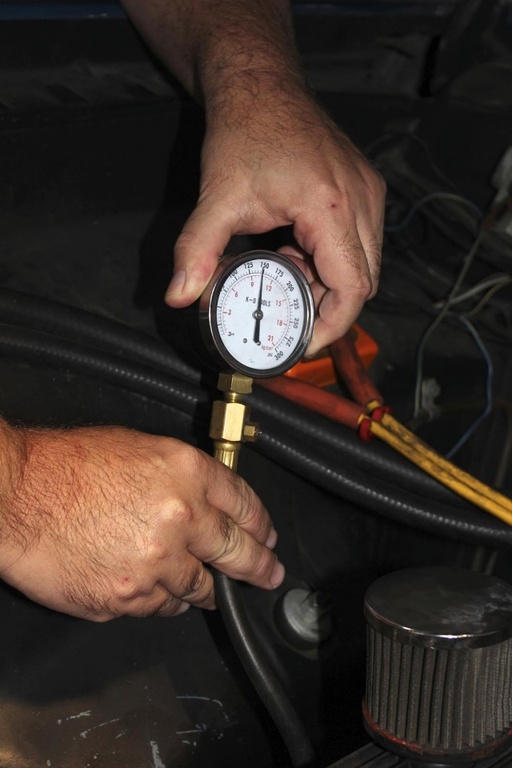 [24]
[24]A compression test will tell you the pressure and the consistency of the pressure inside each chamber.
Compression Testing
To make sure the 318 V8 Wedge engine is in good working order, it’s a good idea to check the internals, specifically compression.
A compression test will tell you if your engine has good compression or not.
An engine is essentially a self-powered air pump, so it needs good compression to run efficiently, cleanly and to start easily.
As a rule, most engines should have 140 to 160 lbs. of cranking compression with no more than 10% difference between any of the cylinders.
Low compression in one cylinder usually indicates a bad exhaust valve. Low compression in two adjacent cylinders typically means you have a bad head gasket.
Low compression in all cylinders would tell you the rings and cylinders are worn and the engine needs to be overhauled.
With a good average all within range of being normal, we could rest assure that the Dart’s 318 engine had some life left in it and will survive long enough to get us to and from the shop until we decide the direction we go with in terms of a new powertrain.
Other Filters, Gaskets, and Cleaning
The final maintenance is pretty standard and should be done for all vehicles you own in your lifetime.
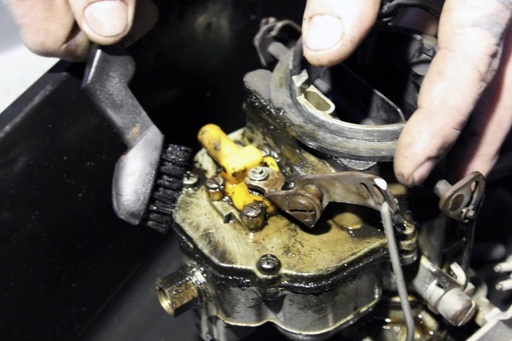 [25]
[25]Cleaning the carb is going to help solve our starting problem allowing fuel to flow freely into the intake.
Replacing filters, gaskets, and regular cleaning will keep the wear and tear of the vehicle to a minimum and extend the life of the car dramatically. For the Dart, the valve cover gaskets, transmission filter, and carburetor needed some attention specifically.
The valve cover gaskets were worn and cracking, so a simple replacement was needed. These are also something easily attained at a local auto parts store. With new transmission oil, it’s also a good idea to replace the transmission filter.
We purchased a Hastings transmission filter online and it should last the transmissions remaining lifetime. The carburetor on the Dart is a two-barrel that seems to be in decent shape, however, it looks like it had never been cleaned. So we added it to the list of items to be cleaned.
Replacement gaskets are a inexpensive yet important step to take to keep your car running smooth.
The carburetor was at the top of the priority list for some cleaning. The Dart’s 318 was having some trouble starting up cold and we suspected the injectors could use a good run through. With carburetor unmounted from the intake manifold, carb cleaner and a steal brush were used to clean large build ups of dirt, dry fuel, and excess engine grime.
Ready To Run: Driver’s Perspective
Typically, when we would go to start the Dart, it would take at least five to six turns on the key along with pumping the gas to get the car to start. With everything checked off the list for the maintenance project on our ’71 Dart, it was time to reap the benefits. Once the car was lowered down off the lift, she fired right up! We can now drive it with piece of mind knowing that the car has some durability left.
We’re still working on the plans for the car. There are so many directions to take it, so luckily all we have to do is pick out the ones we don’t like and then go from there. Here are some different options we’re considering in terms of the overall look of the car and it’s purpose. Maybe you as the reader can provide some insight!
